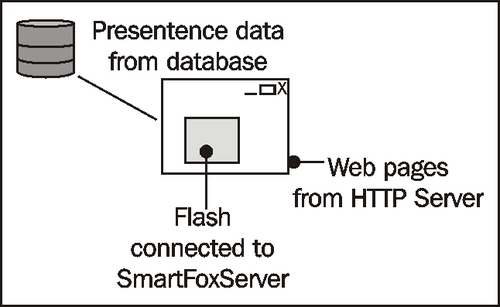SmartFoxServer works excellently as a socket server in connecting clients and provides multiplayer features to virtual world. However, we also need a web server and database set up in practical use.
It may be disorienting at the beginning that we are using three types of servers at the same time. The following graph shows how these servers are responsible for different roles. We need a web server to host the virtual world website and Flash SWF. We also need a database server to store all user information permanently.
 |
SmartFoxServer comes with an embedded HTTP server (Jetty), which can handle web pages and a light-weight database engine (H2). Using the embedded HTTP server and database can enable a rapid prototype development because we can start coding the Flash prototype of the ideas in mind without handling any server setup issues.
SmartFoxServer is also able to work together with third-party web servers and databases, for example, Apache...



